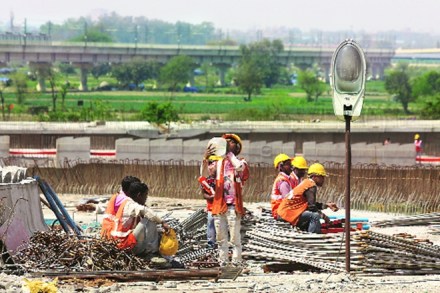By Rohit Jha
The Delhi government had revised minimum wages under the Minimum Wages Act, 1948, from April 1, 2018. Under the revised wages, unskilled workforce in Delhi gets `534 per day or `13,896 per month, semi-skilled `588 per day or `15,296 per month, and skilled get `648 per day or `16,858 per month. Non-matriculates get `588 per day or `15,296 per month, matriculates but not graduates get `648 or `16,858 per month, and graduates and above get `705 or `18,332 per month. This wage hike ranges between 27.16% and 36.78%, from pre-April 1, 2018, levels.
In October 2018, deputy CM Manish Sisodia said the government had effected a historic hike in minimum wages, and labourers in Delhi were being paid the highest amount in the country.
However, are private organisations, industries, hospitals in Delhi in a position to take on this exorbitant hike?
To be precise, job opportunities have slowed down and organisations are unable to sustain additional manpower. In such a situation, a massive hike in wages can overburden financial liabilities and cripple day-to-day operations of the already distressed organisations in the national capital. These entities in the national capital employ lakhs of people from across all age-groups.
Another issue that requires a re-look by the Delhi government and policymakers is how relevant is it to formulate a wage hike for workers based on CPI, when salary revisions for central and state government employees are based on WPI?
To provide a better understanding on CPI and WPI and why it might be incorrect on the part of the Delhi government to revise new wages based on CPI, we must take note of what the ex-Governor of RBI, D Subbarao, had said during his stint on WPI and CPI. He had defended WPI usage in the central bank’s inflation forecast. He pointed out that “given the limited efficacy of monetary policy to deal with food and fuel inflation, and the limits on using core CPI inflation measures, we have focused our attention on non-food manufactured products inflation, as an indicator of demand-side pressures in the economy.”
Subbarao had also noted that RBI opted for WPI over CPI as “we do not have a single CPI that is representative of the whole country. Secondly, WPI is available with a shorter lag than CPI. Third, WPI has a broader coverage than CPI in terms of the number of commodities, quotations, inclusion of non-agricultural products and tradable items.”
There are numerous other examples that would corroborate the fact that when the central and state governments follow WPI for wage revision, there is no justification for the Delhi government to make an exorbitant wage hike based on CPI.
We must also take into account that there has been a massive flow of population to the national capital, especially the millennials, who are looking for job opportunities. An unintended consequence of the move maybe the outflow of industry and capital to Delhi’s neighbourhood.
Private organisations alone cannot shoulder the burden of the financial pressure that comes with exorbitant hike in wages; they need to focus on more efficient systems and more efficient workforce to maintain profitability. Employers are under pressure to minimise their manpower to overcome pressure from hiked wages. A holistic view has to be taken into consideration to ensure sustainability of organisations and industries providing employment.
